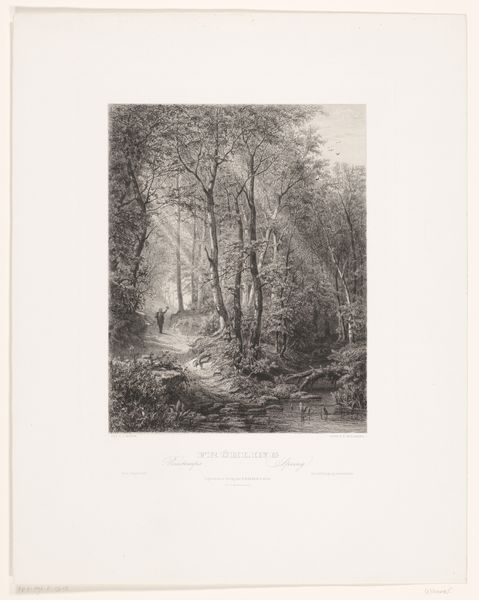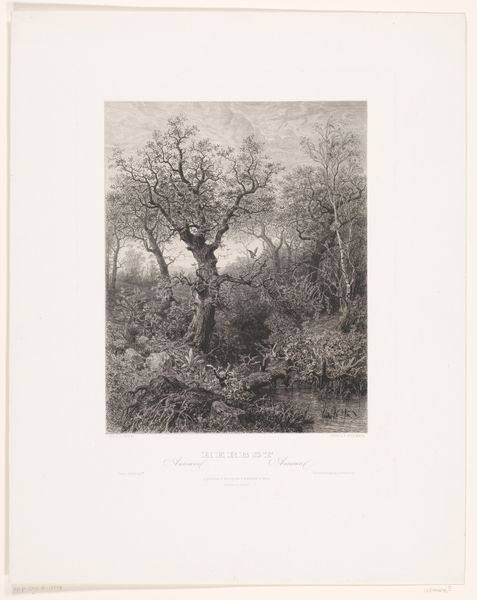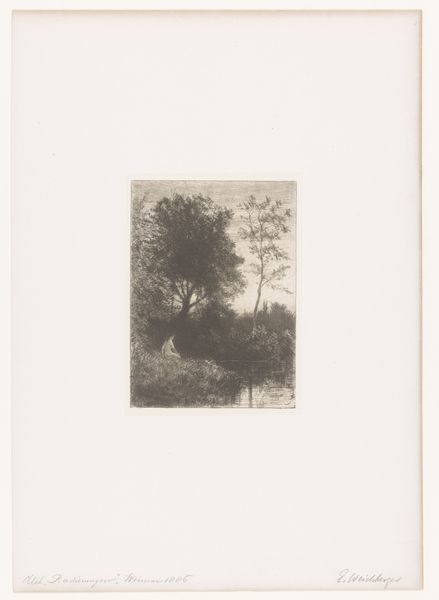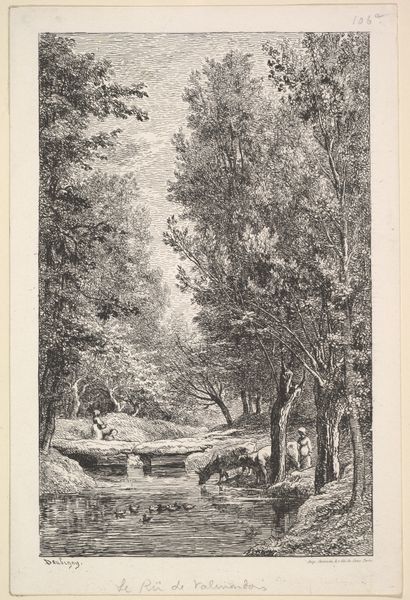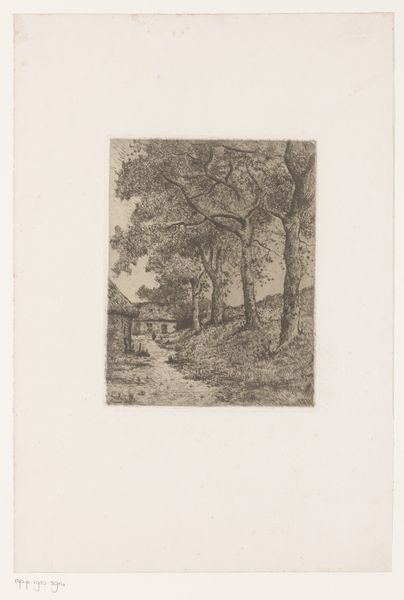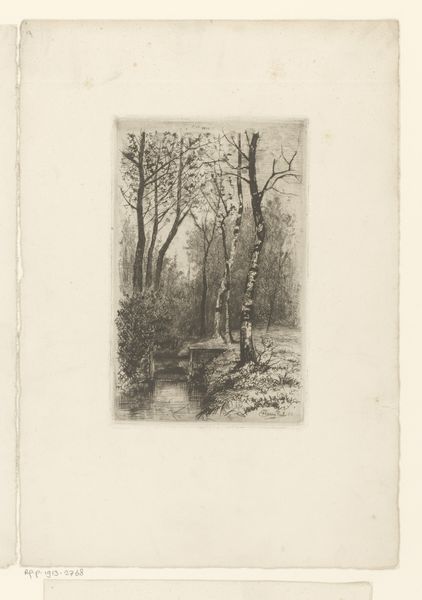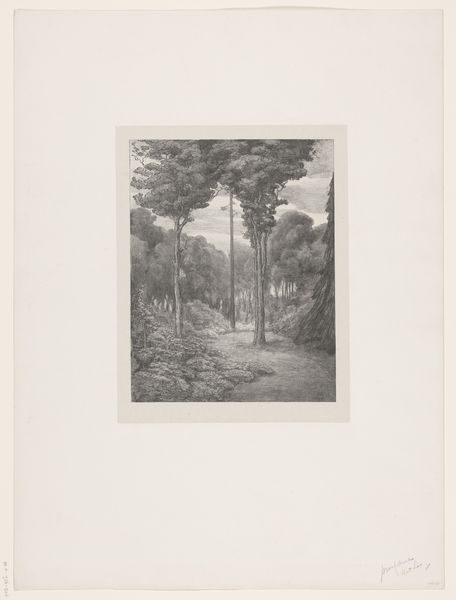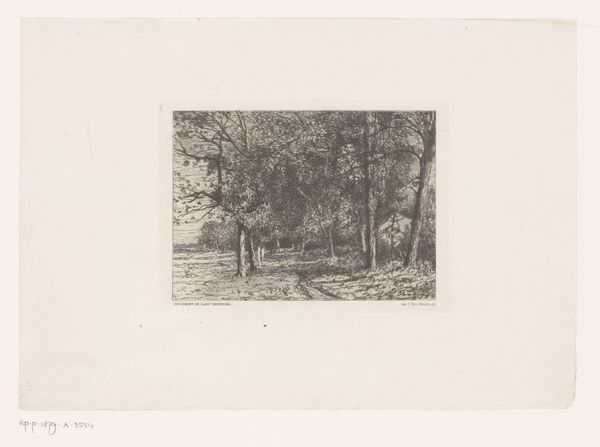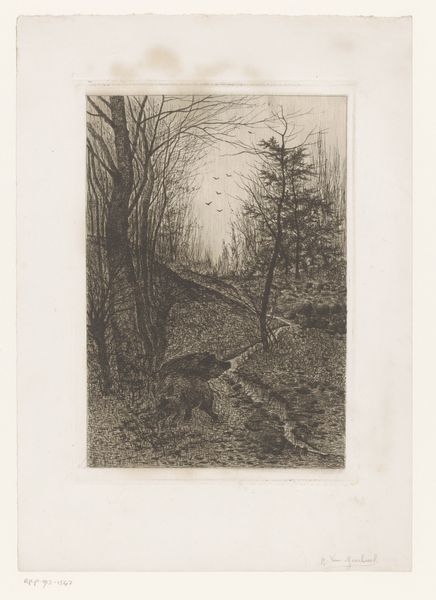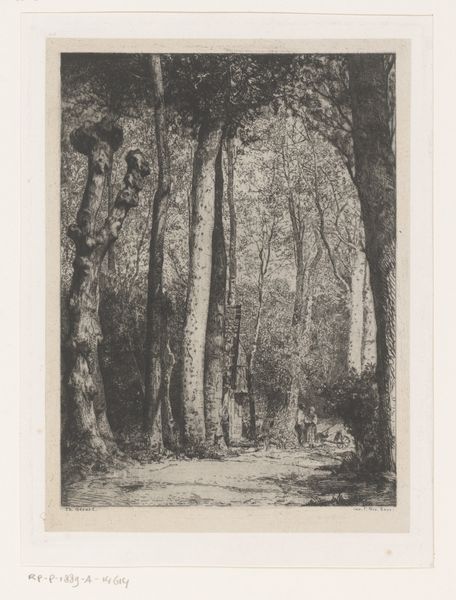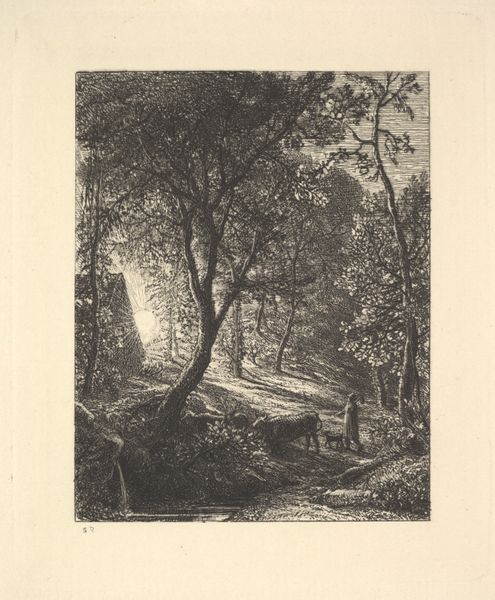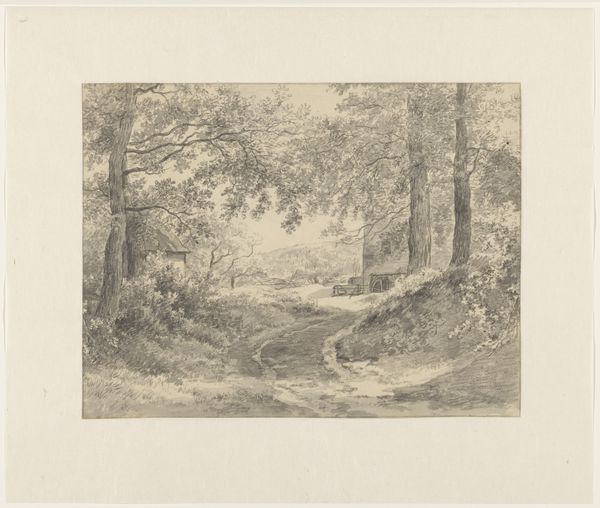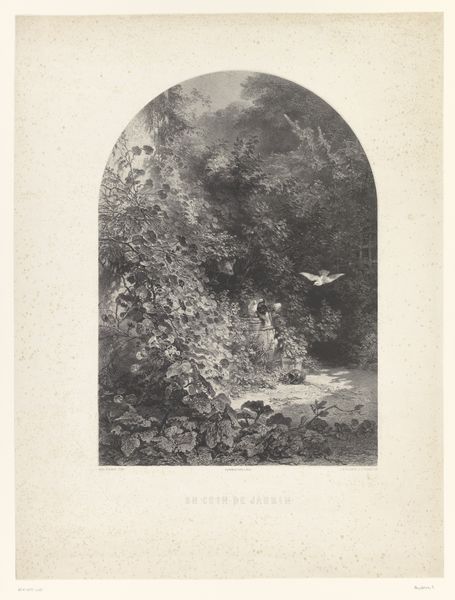
Dimensions: height 420 mm, width 302 mm
Copyright: Rijks Museum: Open Domain
Curator: Here we have Eduard Willmann's "Zomer," created sometime between 1842 and 1877. It’s a captivating example of Romantic landscape, rendered through etching and engraving techniques. Editor: It feels so detailed! Look at how the light dapples through the leaves, almost photographic, yet grounded in the handmade through the line work. There's such a density to it all. Curator: That’s a key element of Romanticism – evoking a sense of the sublime through nature. Willmann positions the viewer within the forest, dwarfed by the trees and suggesting a wider world beyond the immediate scene. It reflects the social context where landscape art gained importance with rising nationalistic feelings and the idea of untouched wilderness. Editor: I’m curious about the labour involved. All those individual lines, built up to create texture and tone. What would it have meant to painstakingly recreate the scene in this way? What are the conditions of his making this, from access to material and light to class. It emphasizes a real tension between our natural world and our ability to consume it. Curator: It's important to note the development of printmaking techniques during this period, facilitating wider distribution of art. Willmann likely catered to a middle-class audience keen to experience nature through art. Editor: So this image democratises what? How far can its reach spread if access is controlled and dependant on certain societal hierarchies? Curator: It is meant to invoke something greater in the viewer. We can look to Friedrich's 'Wanderer Above the Sea of Fog' - that is an idea Willman appears to play with in this work. The small human presence further in the scene emphasises our relationship with our envrionment - and the scale and setting give us context as to the time it was made. Editor: I’m really struck by how he has highlighted the craft and method - the act of making becomes visible in the final piece which enhances that idea of what is at play here - he has captured the moment and provided access. Curator: Absolutely, and through this lens, Willmann offered a controlled, and socially informed view of the natural world that would have resonated with many in his time. Editor: Definitely food for thought – a print rich in layers both visible and ideological!
Comments
No comments
Be the first to comment and join the conversation on the ultimate creative platform.
